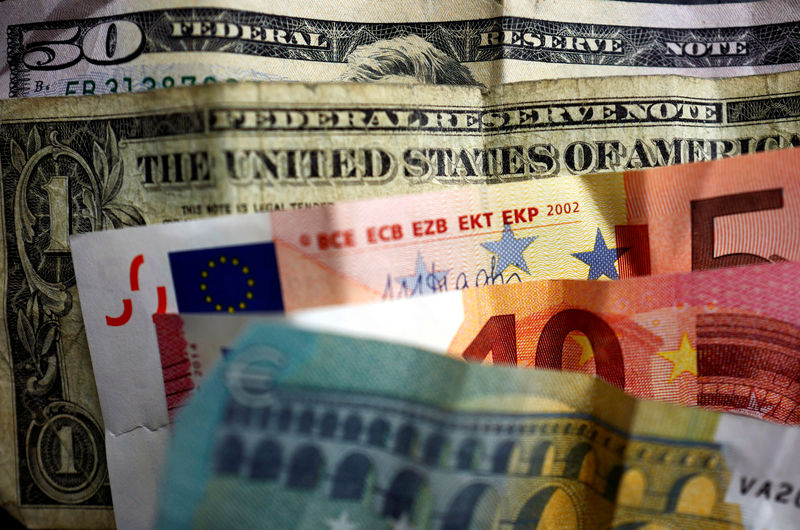Chinese chip stocks jump as Beijing reportedly warns against Nvidia’s H20
Investing.com - Sentiment regarding the euro has grown a lot since the start of the year, and Bank of America Securities sees this improving further as the U.S. reciprocal tariffs take effect.
At 06:00 ET (10:00 GMT), EUR/USD traded 0.8% higher at $1.1047, up over 6.5% since the beginning of 2025.
The announced U.S. reciprocal tariffs are a negative growth shock for Europe, but even more for the U.S, said analysts at Bank of America Securities, in a note dated April 9.
“Before accounting for China’s announced retaliatory measures, our economists would expect a 100-150 bps growth hit on the U.S. economy vs a 40-60 bps hit on the euro area one,” the bank said.
This could result in some downside risks to the bank’s 1.50% ECB terminal-rate forecast, but, for the Fed, they see risks it eases – eventually, given the supply-side nature of the shock for the U.S. – by 200 bps or more.
So, unless something in the real economy breaks, across the board U.S. tariffs support EUR-USD, the bank added.
“We see upside EUR risks from a measured EU response, EU reforms, and a push for trade deals with the rest of the world,” BofA said. “Following the German-led paradigm fiscal shift, we see upside risks to our already bullish EUR forecasts (EUR-USD 1.15 this year, 1.20 next) from more joint EU issuance later in the year.”
On the flows side, the euro could benefit considerably from continued asset reallocation toward Europe and/or higher hedging ratios of European asset managers.
“Sanity checks suggest EUR has outperformed. We do maintain a bearish bias vs. GBP and the “high betas” but remain bullish vs. USD, JPY, and CHF – we think the EUR goalposts have only just started shifting.”
